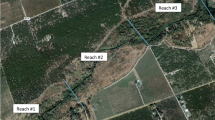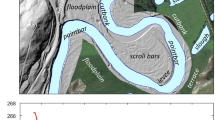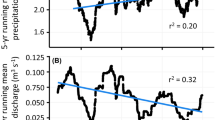Populus
Human demands for surface and shallow alluvial groundwater have contributed to the loss, fragmentation, and simplification of riparian ecosystems. Populus species typically dominate riparian ecosystems throughout arid and semiarid regions of North American and efforts to minimize loss of riparian Populus requires an integrated understanding of the role of surface and groundwater dynamics in the establishment of new, and maintenance of existing, stands. In a controlled, whole-stand field experiment, we quantified responses of Populus morphology, growth, and mortality to water stress resulting from sustained water table decline following in-channel sand mining along an ephemeral sandbed stream in eastern Colorado, USA. We measured live crown volume, radial stem growth, annual branch increment, and mortality of 689 live Populus deltoides subsp. monilifera stems over four years in conjunction with localized water table declines. Measurements began one year prior to mining and included trees in both affected and unaffected areas. Populus demonstrated a threshold response to water table declines in medium alluvial sands; sustained declines ≥1 m produced leaf desiccation and branch dieback within three weeks and significant declines in live crown volume, stem growth, and 88% mortality over a three-year period. Declines in live crown volume proved to be a significant leading indicator of mortality in the following year. A logistic regression of tree survival probability against the prior year's live crown volume was significant (−2 log likelihood = 270, χ2 with 1 df = 232, P < 0.0001) and trees with absolute declines in live crown volume of ≥30 during one year had survival probabilities <0.5 in the following year. In contrast, more gradual water table declines of ~0.5 m had no measurable effect on mortality, stem growth, or live crown volume and produced significant declines only in annual branch growth increments. Develo** quantitative information on the timing and extent of morphological responses and mortality of Populus to the rate, depth, and duration of water table declines can assist in the design of management prescriptions to minimize impacts of alluvial groundwater depletion on existing riparian Populus forests.
Similar content being viewed by others
Author information
Authors and Affiliations
Rights and permissions
About this article
Cite this article
SCOTT, M., SHAFROTH, P. & AUBLE, G. Responses of Riparian Cottonwoods to Alluvial Water Table Declines. Environmental Management 23, 347–358 (1999). https://doi.org/10.1007/s002679900191
Published:
Issue Date:
DOI: https://doi.org/10.1007/s002679900191




